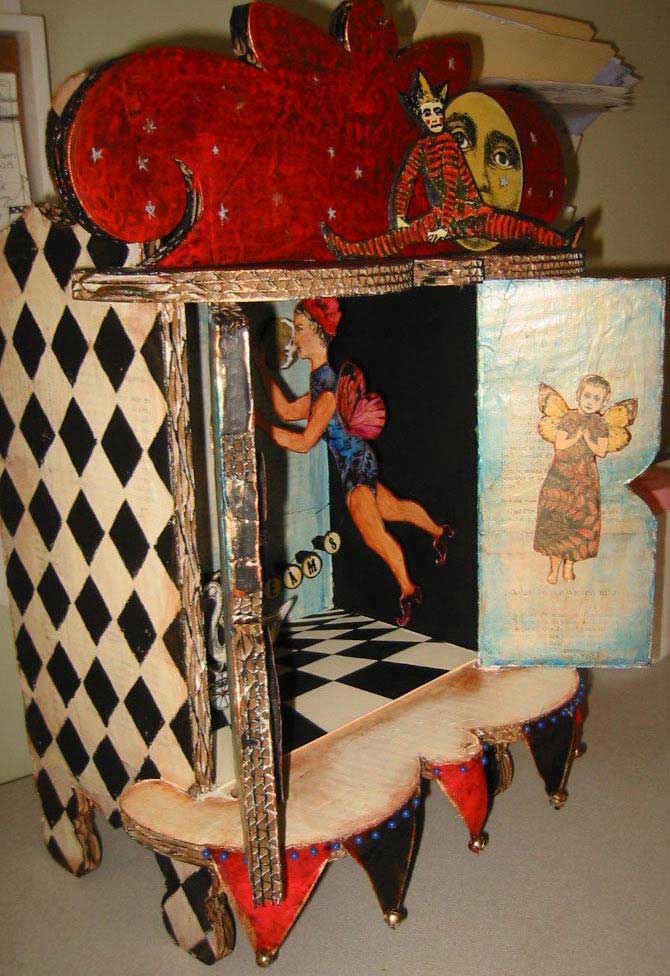Theatre Workshop Tutorial
- Decide on a vessel to use, the one above is a tu-door armoire, a die-cut cardboard chest (18 inches tall x 9 1/2 inches deep x 14 inches wide) available at: http://www.crazycardboard.com/html/marbleized.shtml. Depending on the scale you are accustomed to working in, this is a pretty detailed and ambitious project. You might want to use something smaller for your first theatre. Shadow boxes, and basically any kind of box can be adapted into a theatre.
- Preparation. This cardboard structure is pretty raw, so you will need to think about covering it before you can get your character development underway. There are some decorative papers on the market that would work well, or you could do what I did. I covered the entire structure first with book pages, then painted and glazed them. If you are working with another type of structure this prep work might be unnecessary. Some of the antique theatres I have seen were in ornate frames lined with black velvet.
- Cast of Characters: For my characters, naturally I used Character Constructions. I enlarged the images to fit them to the scale of the theatre and printed them onto cardstock. I then mounted the characters to black foamcore to give them some dimension, the cut them out with a utility knife and colored them with pencils and painted glazes.
- Models. I really didn't have a model to follow when putting my theatre together, but my working concept was to build a 3-dimensional model of my Theater of Dreams catalog. I now have a nice collection of books for reference points, and one that I highly recommend is Toy Theatres of the World by Peter Baldwin. It has copious illustations to inspire you, and as you will see, the possibilities are endless. This book is available online at Pollocks Toy Shop pollocks-coventgarden.co.uk





